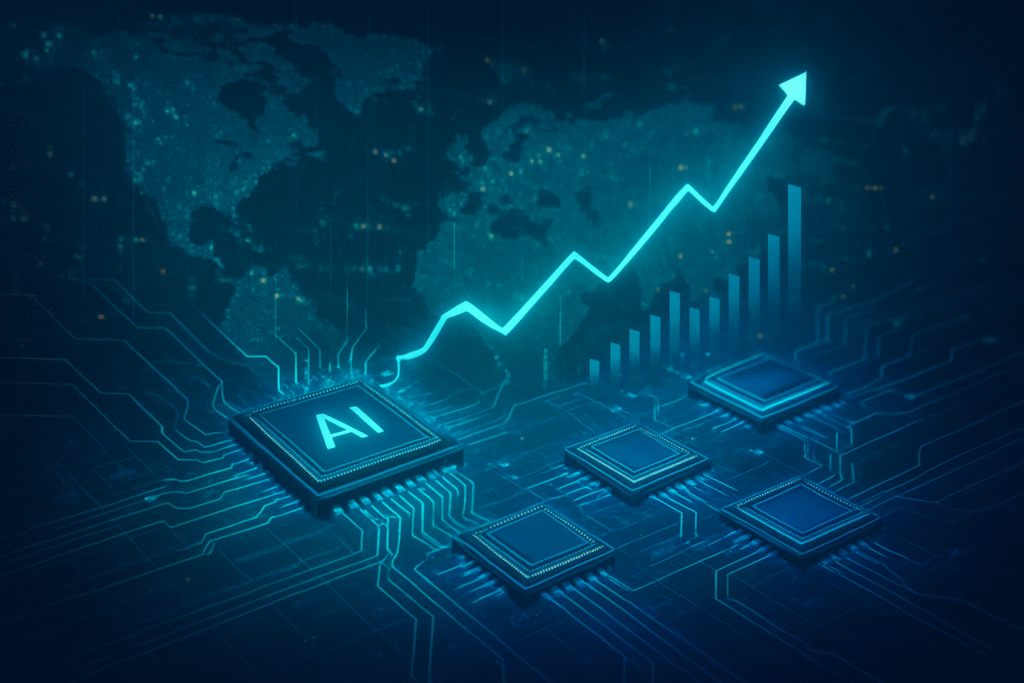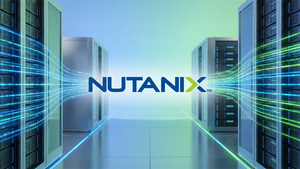
The global semiconductor industry is demonstrating remarkable resilience, projected to achieve unprecedented growth despite the persistent and often escalating U.S.-China trade tensions. With global sales anticipated to hit a new all-time high of $697 billion in 2025—an 11.2% increase over 2024—and an ambitious trajectory towards $1 trillion by 2030, the sector is not merely weathering geopolitical storms but leveraging underlying technological revolutions and strategic adaptations to fuel its expansion. This robust outlook, confirmed by industry analysts and recent performance figures, underscores the foundational role of semiconductors in the modern digital economy and the powerful tailwinds generated by the relentless march of artificial intelligence.
At the heart of this growth narrative is the insatiable demand for advanced computing power, primarily driven by the exponential rise of Artificial Intelligence (AI) and cloud computing. The generative AI chip market alone, valued at over $125 billion in 2024 and expected to surpass $150 billion in 2025, already accounts for more than 20% of total chip sales. This segment encompasses a broad array of specialized components, including high-performance CPUs, GPUs, data center communication chips, and High-Bandwidth Memory (HBM). The transition to cutting-edge semiconductor technologies, such as Gate-All-Around (GAA) transistors, advanced DRAM, and sophisticated packaging solutions, is not just an incremental improvement but a fundamental shift demanding new equipment and processes, thereby stimulating further investment and innovation across the supply chain. Unlike previous cycles driven primarily by consumer electronics, the current surge is propelled by a broader, more diversified demand for compute across enterprise, industrial, automotive, and healthcare sectors, making the industry less susceptible to single-market fluctuations.
The AI Engine and Strategic Re-Industrialization
The specific details underpinning this robust growth are multifaceted. The pervasive integration of AI across various industries, extending beyond traditional data centers into edge computing, autonomous systems, and advanced analytics, necessitates an ever-increasing supply of powerful and efficient chips. This demand is fostering rapid advancements in chip architecture and manufacturing processes. For instance, the development of GAA transistors represents a significant leap from FinFET technology, allowing for greater transistor density and improved performance, crucial for next-generation AI accelerators. Similarly, HBM is becoming indispensable for AI workloads by providing significantly higher memory bandwidth compared to traditional DRAM, overcoming a critical bottleneck in data-intensive applications. These technical advancements differentiate the current era from past cycles, where growth was often tied to more incremental improvements in general-purpose computing.
Initial reactions from the AI research community and industry experts are overwhelmingly optimistic, albeit with a cautious eye on geopolitical complexities. Analysts like Joshua Buchalter of TD Cowen suggest that the semiconductor ecosystem will "grind higher" despite trade tensions, often viewing restrictions as tactical negotiation tools rather than insurmountable barriers. Deloitte projects an impressive compound annual growth rate (CAGR) of 7.5% between 2025 and 2030, aligning with the industry's $1 trillion sales target. The KPMG 2025 Global Semiconductor Industry Outlook further reinforces this sentiment, with a staggering 92% of executives anticipating revenue growth in 2025, highlighting the industry's proactive stance in fostering innovation and adaptability. This consensus points to a belief that fundamental demand drivers, particularly AI, will outweigh geopolitical friction in the long run.
Corporate Beneficiaries and Market Realignments
This dynamic environment creates distinct winners and losers, reshaping the competitive landscape for AI companies, tech giants, and startups alike. Companies like Taiwan Semiconductor Manufacturing Company (NYSE: TSM), the world's largest contract chipmaker, stand to benefit significantly from increased demand for advanced nodes and strategic investments in manufacturing capacity outside of Asia, notably in the U.S., supported by initiatives like the CHIPS Act. This "friend-shoring" strategy helps TSMC maintain market access and diversify its operational footprint. Similarly, equipment manufacturers such as Applied Materials (NASDAQ: AMAT) are strategically positioned to capitalize on the global build-out of new fabs and the transition to advanced technologies, despite facing headwinds in historically substantial markets like China due to export controls.
The competitive implications for major AI labs and tech companies are profound. Those with proprietary chip designs, such as NVIDIA (NASDAQ: NVDA) with its dominant position in AI GPUs, and cloud providers like Amazon (NASDAQ: AMZN) and Google (NASDAQ: GOOGL) developing their own custom AI accelerators, will see their strategic advantages amplified by the underlying growth in the semiconductor sector. Conversely, Chinese semiconductor firms, like Semiconductor Manufacturing International Corporation (SMIC), face significant challenges due to U.S. restrictions on advanced manufacturing equipment and technology. While these restrictions have led to declines in SMIC's net income, they have also spurred aggressive R&D spending within China to achieve technological self-reliance, with the ambitious goal of 50% semiconductor self-sufficiency by 2025. This creates a bifurcated market, where geopolitical alignment increasingly dictates market positioning and strategic advantages, potentially disrupting existing product pipelines and forcing companies to rethink their global supply chain strategies.
Broader Implications and Geopolitical Tectonics
The resilience and growth of the semiconductor industry amidst U.S.-China trade tensions represent a critical development within the broader AI landscape. It underscores that AI's insatiable demand for processing power is a force strong enough to reconfigure global supply chains and stimulate unprecedented investment. This situation fits into broader trends of technological nationalism and the weaponization of economic dependencies, where governments are increasingly viewing semiconductor manufacturing as a matter of national security rather than just economic competitiveness. The U.S. CHIPS Act and similar initiatives in Europe and Japan are direct responses to this, aiming to re-industrialize chip production and enhance supply chain resilience, reducing reliance on single geographic regions.
The impacts are wide-ranging. On one hand, it fosters diversification and strengthens regional manufacturing bases, potentially leading to more robust and secure supply chains in the long term. On the other hand, it raises concerns about market fragmentation, increased costs due to redundant manufacturing capabilities, and the potential for slower innovation if access to global talent and markets is restricted. This geopolitical chess match has led to comparisons with past technological arms races, highlighting the strategic importance of semiconductors as the "new oil" of the digital age. The current situation differs from previous milestones by not just being about technological advancement, but also about the fundamental restructuring of a globalized industry along geopolitical lines, with national security driving significant capital allocation and policy decisions.
The Horizon: Innovation and Persistent Challenges
Looking ahead, the semiconductor industry is poised for continuous innovation and expansion. Near-term developments will likely focus on optimizing existing advanced nodes and accelerating the deployment of HBM and advanced packaging solutions to meet immediate AI demands. Longer-term, the industry is expected to push towards even more advanced transistor architectures, such as 2nm and beyond, and explore novel materials and computing paradigms, including neuromorphic and quantum computing, which will unlock new frontiers for AI applications. The proliferation of AI into every conceivable sector—from smart cities and personalized healthcare to advanced robotics and sustainable energy management—will continue to drive demand for specialized, energy-efficient chips.
However, significant challenges remain. The escalating costs of developing and manufacturing at the leading edge necessitate massive R&D investments and collaborative ecosystems. Geopolitical volatility will continue to be a persistent concern, requiring companies to navigate complex regulatory environments and manage diversified, yet potentially less efficient, supply chains. Experts predict a continued "grinding higher" for the industry, but also anticipate that the U.S.-China dynamic will evolve into a more permanent bifurcated market, where companies must choose or balance their allegiances. The need for a highly skilled workforce will also intensify, posing a talent acquisition and development challenge globally.
A New Era for Silicon
In wrap-up, the semiconductor industry's expected growth despite U.S.-China trade tensions is a testament to the irresistible force of technological progress, particularly the rise of AI, and the strategic adaptability of global corporations and governments. Key takeaways include the pivotal role of AI as the primary growth driver, the acceleration of geographical diversification and "friend-shoring" strategies, and the emergence of a bifurcated global market. This development signifies a new era for silicon, where national security interests are as influential as market forces in shaping the industry's trajectory.
The significance of this period in AI history cannot be overstated. It marks a shift from purely economic competition to a geopolitical contest for technological supremacy, with semiconductors at its core. The long-term impact will likely be a more regionally diversified but potentially more fragmented global semiconductor ecosystem. In the coming weeks and months, observers should watch for further government policies aimed at bolstering domestic manufacturing, the progress of Chinese firms in achieving self-reliance, and the continued innovation in AI chip architectures. The silicon heart of the digital world continues to beat strongly, adapting and evolving in the face of unprecedented challenges.
This content is intended for informational purposes only and represents analysis of current AI developments.
TokenRing AI delivers enterprise-grade solutions for multi-agent AI workflow orchestration, AI-powered development tools, and seamless remote collaboration platforms.
For more information, visit https://www.tokenring.ai/.







